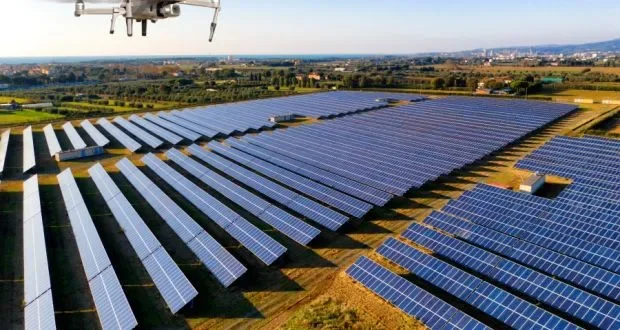

DCU team examines use of drones to monitor wind and solar farms
Researchers at DCU, led by Prof Patrick McNally, are participating in a first-of-its-kind European project to explore the benefits of using drones and robots for the maintenance of wind and solar farms. The DURABLE project aims to find out whether using these technologies to automate inspection of faults can boost take-up of renewable energies along the Atlantic and reduce costs.
The DCU researcher leading the project locally is Prof Patrick McNally, deputy director of DCU’s Advanced Processing Technology Research Centre and Professor in the School of Electronic Engineering. Prof McNally said countries along the western Atlantic seaboard are lagging behind renewable energy targets. Plans to reach a 20 per cent renewable energy use target by the end of 2020 is looking highly unlikely, particularly in the Republic where use is running at under 11 per cent.
“One of the biggest impediments to driving things forward in encouraging greater adoption of wind and solar farms is the cost of maintenance, which represent upwards of 25 per cent of the total cost of producing energy. The idea of the project is that unmanned vehicle technology, modern robotics technology and augmented reality can all be used to inspect turbines and solar panels to discover faults early on,” said Prof McNally.
A total of 13 European partners across France, Ireland, Portugal, Spain and the UK are involved and a budget of €3.9 million has been co-financed by the Interreg Atlantic Area Program through the European Regional Development Fund.
“We envisage that through using a drone you might be able to spot a fault in a turbine using thermal imaging or ultrasonics. We will be interrogating the electromagnetic fields around turbines, which essentially means we will be listening to the radio waves they produce. Our particular role in the project is to provide the technology to listen to the radio frequency spectrum that emanations from the turbines and to correlate what we hear with faults in the turbine system to find out things such as cracks in blades or missing ball-bearings,” said Prof McNally.
The project will also investigate the use of 3D printers to custom-build repairs for any problems uncovered by the drones and robots. The DURABLE project is expected to run until 2022.
